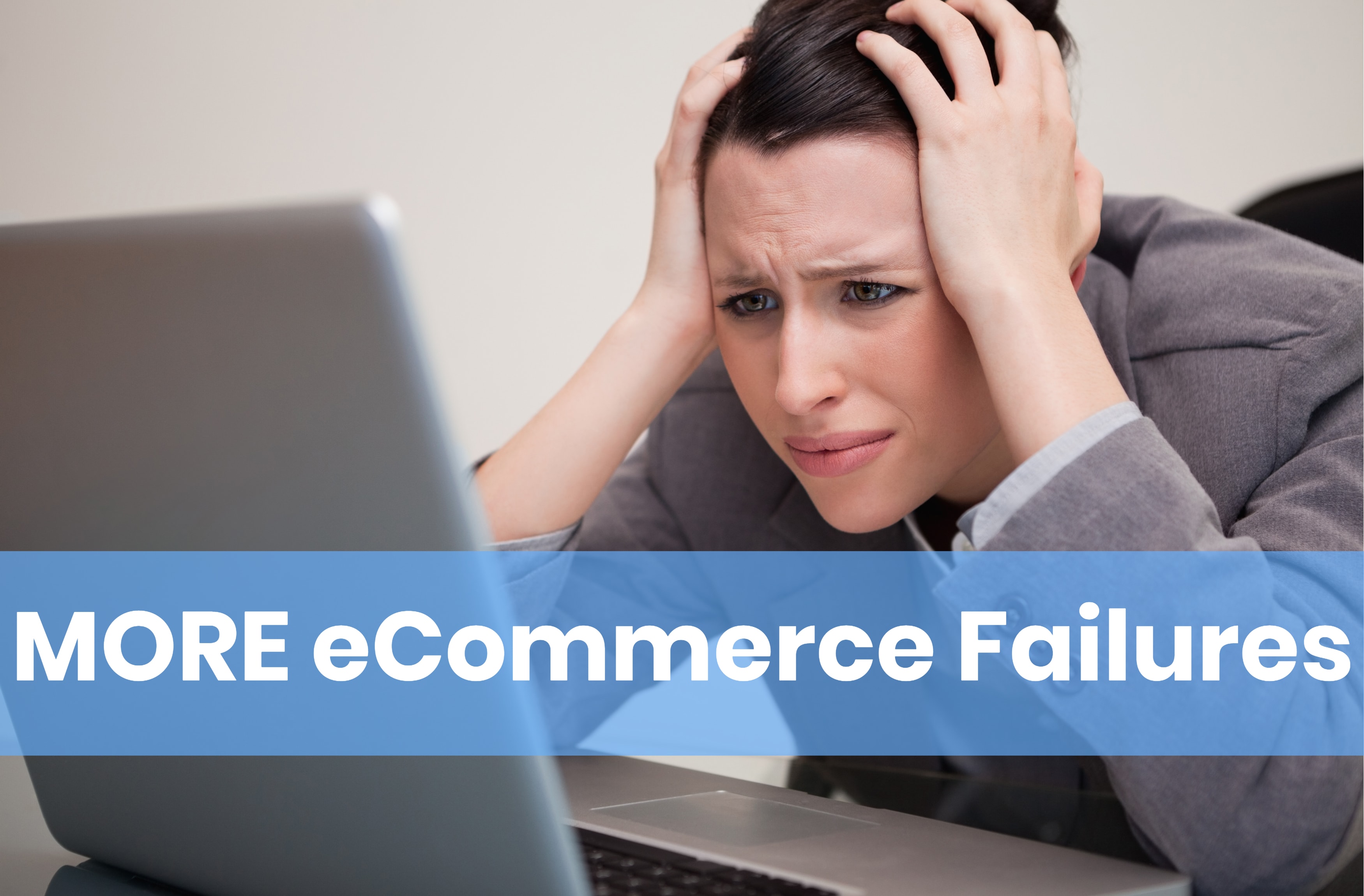How to Avoid eCommerce Blunders
In last week’s post on avoiding eCommerce failures, we covered three common mistakes that many manufacturers and distributors make when they build their web stores. However, those three errors don’t come close to covering all of the most frequent eCommerce blunders. We aren’t highlighting these mistakes to deter organizations from implementing an online store. In fact, detracting companies from building a web store would be a huge disservice, for an eCommerce site is crucial for expanding business in an increasingly digital marketplace. Whether you’re a B2B or B2C company, your business can grow its customer base and serve customers better by implementing a web store.
That being said, organizations have to take careful steps to ensure their website performs optimally and brings in a high return on their software investment. In our continued exploration of eCommerce failures, we’ll explain how to avoid some common pitfalls and create a revenue-boosting site.
Poor Mobile Experience
Last year saw immense growth in mobile shopping with Cyber Monday 2017 becoming the first $2 billion mobile shopping day in the U.S., and this trend shows no sign of slowing down. But many businesses aren’t keeping up with the pace, creating websites that are incompatible with mobile formats. If visitors are waiting too long for the page to load, struggling to read the content or fumbling with links and buttons, you can’t expect high sales traffic.
A few simple strategies will transform your site’s mobile user experience. Our fingers are a little clumsier than a computer mouse, so buttons need to be large enough for visitors to easily see them and avoid hitting the wrong buttons by mistake. Font sizes also need to be large enough for shoppers to read without squinting at their screens. Furthermore, avoid writing long paragraphs; they seem like endless blocks of text on small screens.
The best solution to providing an engaging user experience on mobile devices is to implement a responsive eCommerce site. With Magento, you can create a single website that will automatically adjust to any screen size. Wasting time building multiple websites for multiple devices will hurt your search rankings and make it difficult to maintain a consistent brand experience. Responsive websites simplify online shopping on any smartphone, desktop and tablet.
Outdated Pages and Broken Links
Including web pages and banners to capitalize on seasonal trends or advertise holiday sales is a smart approach to eCommerce. However, if you don’t carefully maintain your site, you’ll compile a lot of dead pages, broken links or outdated promo codes and sales pages. These problems frustrate shoppers, deterring them from ever reaching the checkout page. Perform customer experience audits, especially before busy online shopping periods, to check for 404 links, inaccurate information or anything else that could hinder conversion rates. For quick fixes, there are several free broken link checkers that will locate dead pages, and Google includes a Remove URLs tool that temporarily blocks pages from Google Search results.
Insufficient Information
The fact that consumers can’t witness a product in person already creates an obstacle in the online sales process. Without return policies, contact information and shipping and taxing prices displayed prominently, visitors are even less likely to trust that your merchandise is a worthwhile purchase. Don’t give shoppers any reason to doubt the integrity of your business or the quality of your products. Share shipping rates and return policies upfront. Friendly return policies and clearly visible shipping costs go a long way in putting shoppers at ease. Make sure to also include your full contact information throughout the website to establish your legitimacy.
Complex Checkouts
Even if you have consumers hooked on your products and adding items to their cart, you could still lose them during the checkout process. Web users enjoy online stores for fast, easy shopping. The last thing they want to do is go through a multi-step checkout that takes as much time as going to the store. Take advantage of type-ahead address verification to shorten checkouts. This tool will benefit your business as well by offering reliable addresses to ensure accurate shipping and delivery. Magento’s Instant Purchase option utilizes saved addresses and payment information to enable shoppers to checkout at the click of a button.
Wrap Up
The key to eCommerce success lies not only in a robust eCommerce solution such as Magento but also in the little details that contribute to functional website performance. Most eCommerce failures can be solved with quick fixes, but staying on top of each and every facet of your web design requires a comprehensive strategy as well as advanced software that provides analytics and tools to boost efficiency and give insight into the site’s performance.
An expert Magento implementer, Datix knows how to leverage the full functionality of Magento eCommerce to build a competitive online store. In addition, we can further streamline processes and ensure your data’s integrity with an integration between Magento and Epicor ERP. Learn more about our eCommerce and integration solutions. Contact us today!
{{cta(‘770c1544-d87d-4acb-9fc4-7a25e1385094′,’justifycenter’)}}


